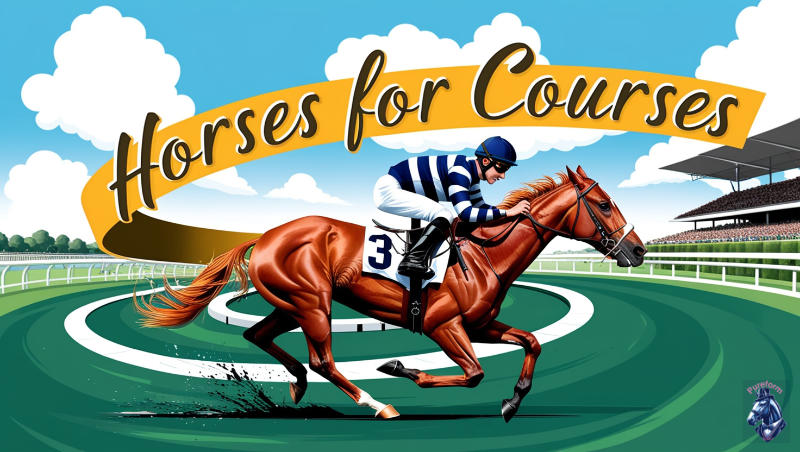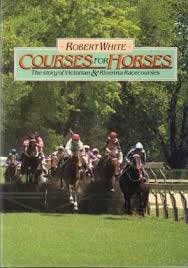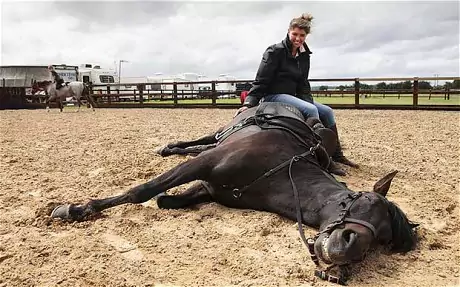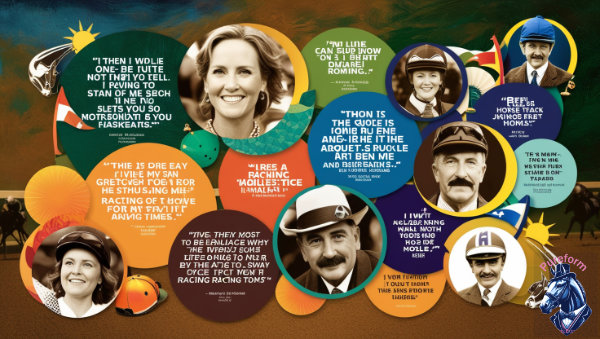PUREFORM
Australian Horse Racing
The Edge
We all want to be competitive in everything we do. And no more so that with punting on horse racing.
Success in punting on horses, in fact most things reduces down to an information war - the people with the best information make the smart moves.
Books have been and still are the best source of general information, and this applies at least as much in the art of racehorse selection and staking as in any other field.
Author Paul Segar has produced textbooks which cover all aspects of punting. The books alone stand as a complete reference but also provide 'food for thought'. You can develop / improve your own ideas as well as learn some new techniques.
Each book is written in plain English with plenty of practical examples in each chapter. Browse the contents of each book or email for further information, if required.
Improve your punting knowledge today - buy one or all of these
books.
Read the books but want more? It's time to do a course.
The Pureform Introduction Course uses a computer program to show you how and when to bet and how to do it successfully. Check out the details
The Benchmark Handicapper Course continues from the Introduction Course and gives you further weapons to apply when making quality value selections. More...
The Introduction to Dutch Betting using the Ratings Calculator Course gives you an introduction to betting using the Ratings Calculator computer software. More...
Buy all three books now:
$70 posted
The Anaerobic Conundrum
Menu
Part 1 Anaerobic Energy
Part 2 Horses for Courses
Part 3 Barrier
Part 4 Tracks
Part 2: Horses for Courses

Horses for courses is one of the main topics discussed when dealing with horse racing.
Some horses race better and worse at various tracks and this can be related in part to the horse's stride length.
A larger striding horse may find running around corners more difficult than its smaller counterpart.
For Black Caviar (BC) with her massive stride, you would think she would struggle on a tight track like Moonee Valley. As always in horse racing, there are the exceptions and, in her case, it was most likely her amazing ability that allowed her to adapt.
Without denigrating her efforts, the largest field faced at the Valley was 7 runners so the difficulty for want of another term of the ninety-degree tight turns was significantly decreased with a small field size.
Most of the time you are not betting on champion horses like BC who can do amazing things, often when you least expect it. She was a champion, and her enormous stride is one of the contributing factors behind being able to move from winning over 1400 m at Caulfield running the last 600 in 33.39 seconds back to the straight Flemington 1000 m running an incredible last 600 m time of 31.82 seconds. We are not talking about some donkey being able to do that which, in simple terms, is almost impossible.
What does a large stride mean in general terms? A horse with a very large stride will not be able to accelerate as quickly as a horse with a smaller stride. The horse with a larger stride will need to be fitter to be able to maintain that larger stride and a whole lot of other factors in between. A larger horse typically will have a larger stride and beat a horse with a smaller stride, all other things being equal.
The large striding horse may find a tight turning or circular track far harder to navigate than a roomier track with less turns. A track with a short straight may favor shorter striding runners especially as to how the horses are travelling on the home turn. Some tracks are cambered and allow the horses to accelerate. Others dump the field around the final turn into the straight and by the time the runners are balanced and focused, the race is already over.
From a punting viewpoint, this track preference information may become clear from analysis of the formguide.

The book, Courses for Horses by Robert White first published in 1984 could be found in most punter's arsenal back in the day as a guide to Victorian horse racing. At that time, before the introduction of pokies and casino in Victoria, horse racing was the major player for the punting dollar with meetings only 4 or 5 times a week. Different story in modern times with endless punting dollar opportunities.
Aerobic and Anaerobic Energy
What is the difference between a good and a great campaigner? What makes the difference to a horse finishing on at the finish or weakening?
In part, it has to do with one of the topics of this article - a horse's aerobic and anaerobic capacity.
Aerobic energy uses, you guessed it, air. Anaerobic energy uses energy stored in the body, without the need for any air. From a human perspective, try running 100m while holding your breath. You might be able to do it. 200m? 400m? Very few people could do this.
Imagine doing one hundred pushups holding your breath. That's using anaerobic energy and for most people, the quitting line for energy is way short of the hundred. Kick in some breathing (aerobic energy) and for a fit and healthy person, probably with some training, they could easily hit that hundred.
For the horses, you might hear a race caller talking about a horse at the start of a race “burning” as it tries to get over from a wide barrier or trying to lead. You might also hear a race caller broadcasting that “the runners have gotten into their rhythm” or “found their order”.
When a race begins, the horses are not using aerobic energy. As already discussed, a horse breathes every stride, but when they first jump from the barriers, they are not moving and so accelerating from zero to their normal cruising speed uses a combination of anaerobic and aerobic energy.
The sooner aerobic energy is available the more anaerobic energy is available for later, say at the end of the race.
Races can be run fast the whole race, slow early with a sprint home and anything in between. This variation makes horse racing in Australia so difficult to assess.
A frantic early pace in a short distance race can at times see the fresh stayer or longer distance campaigner perform like a champion. In this type of event, the longer distance horse appears to thunder home swamping the field like a raging tsunami. How so? The others going too fast early have run out of energy. The also rans are basically stopping while the stayer simply continues more or less at its usual slightly slower speed at what appears its unstoppable endeavor.
Horses typically cruise along using their aerobic energy once a rhythm is set. Aerobic energy in simple terms is free. A horse traveling at its normal cruising speed within its “comfort zone” using only aerobic energy can basically run all day. As you can no doubt appreciate, many races are run at higher speed than the normal cruising speed. They do call it racing for a reason. Most horses, especially at crucial parts of a race, are running at the top of their speed with very little margin or spare “fuel in the tank”.
At the end of a race when the pressure is applied after running at top speed, quite often there is very little remaining energy.
This is why some horses seem to stop as if “punctured like a pricked balloon.” They are unable to get enough oxygen to maintain their current speed and their anaerobic energy is completely spent. This horse can do little more than stay on its feet with on occasion a horse leading by six lengths in a race with a short home straight finishing unplaced.
Look at the next horse, he's had enough.

The other horses in a fast run race don't necessarily run home so well, more the leaders “fall in a hole”.
KE=½mv2
To give you some idea about how hard those horses are working, consider the following table:
| Time (sec) | Speed (m/sec) | kJ | Watts |
| 34 | 17.6 | 78 | 2290 |
| 35 | 17.1 | 73 | 2099 |
| 36 | 16.7 | 69 | 1929 |
| 37 | 16.2 | 66 | 1777 |
| 38 | 15.8 | 62 | 1640 |
| 39 | 15.4 | 59 | 1517 |
| 40 | 15 | 56 | 1406 |
| 41 | 14.6 | 54 | 1306 |
| 42 | 14.3 | 51 | 1215 |
| 43 | 14 | 49 | 1132 |
| 44 | 13.6 | 46 | 1057 |
| 45 | 13.3 | 44 | 988 |
| 46 | 13 | 43 | 925 |
| 47 | 12.8 | 41 | 867 |
| 48 | 12.5 | 39 | 814 |
| 49 | 12.2 | 37 | 765 |
| 50 | 12 | 36 | 720 |
| 51 | 11.8 | 35 | 678 |
| 52 | 11.5 | 33 | 640 |



